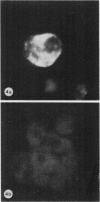Abstract
Intranasal infection of ferrets with a virulent Clone (7a) of the recombinant influenza virus A/PR/8/34—A/England/939/69 (H3N2) produced a fever approximately 24 h in duration beginning about 29 h after infection. The origin of this fever has been investigated as an indication of what might happen in influenza in man.
The systemic production of fever by virus interaction with phagocytes in the reticuloendothelial system appeared unlikely because insufficient virus escaped into the bloodstream. Ten half-hourly i.v. injections of 108 50%0 Egg-Bit Infectious Doses (EBID50) of virus were needed to produce a fever of short duration (3-8 h). Yet, after the intranasal infection, which results in the 24 h fever, the total virus content in the nasal mucosa was less than 108 EBID50 before the onset of fever and only reached 108.5 EBID50 for 4 h during fever. Also, just before or during the fever produced by intranasal infection, influenza virus antigens could not be detected by fluorescent antibody in the spleens of the animals but were detected in animals receiving a single bloodstream injection of 108 EBID50 of virus.
Fever is more likely to result from release of leucocyte pyrogen by virus-phagocyte interaction in the upper respiratory tract. A pyrogen active in ferrets with the characteristics of leucocyte (endogenous) pyrogen was produced by incubating influenza virus with ferret peripheral phagocytes in vitro. A pyrogen with similar properties was released by incubation of nasal inflammatory cells collected from infected febrile ferrets and many of the cells were shown by fluorescent antibody to have interacted with influenza virus.
Full text
PDF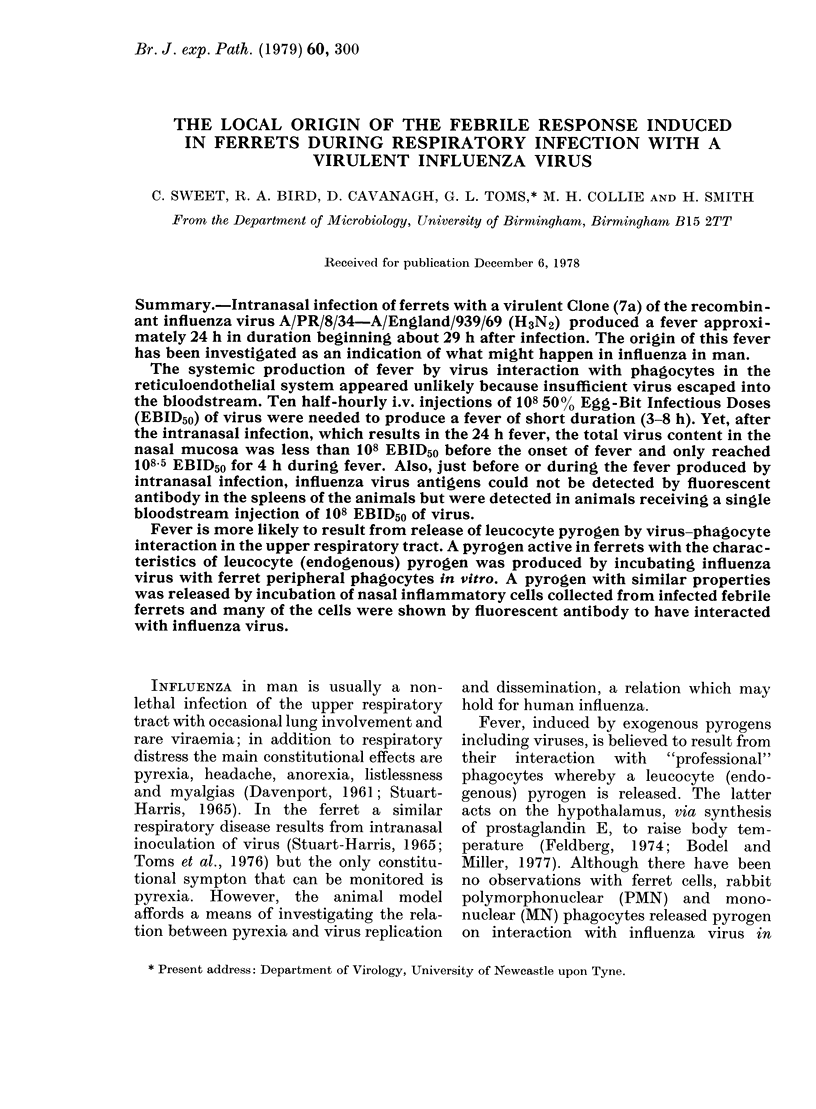
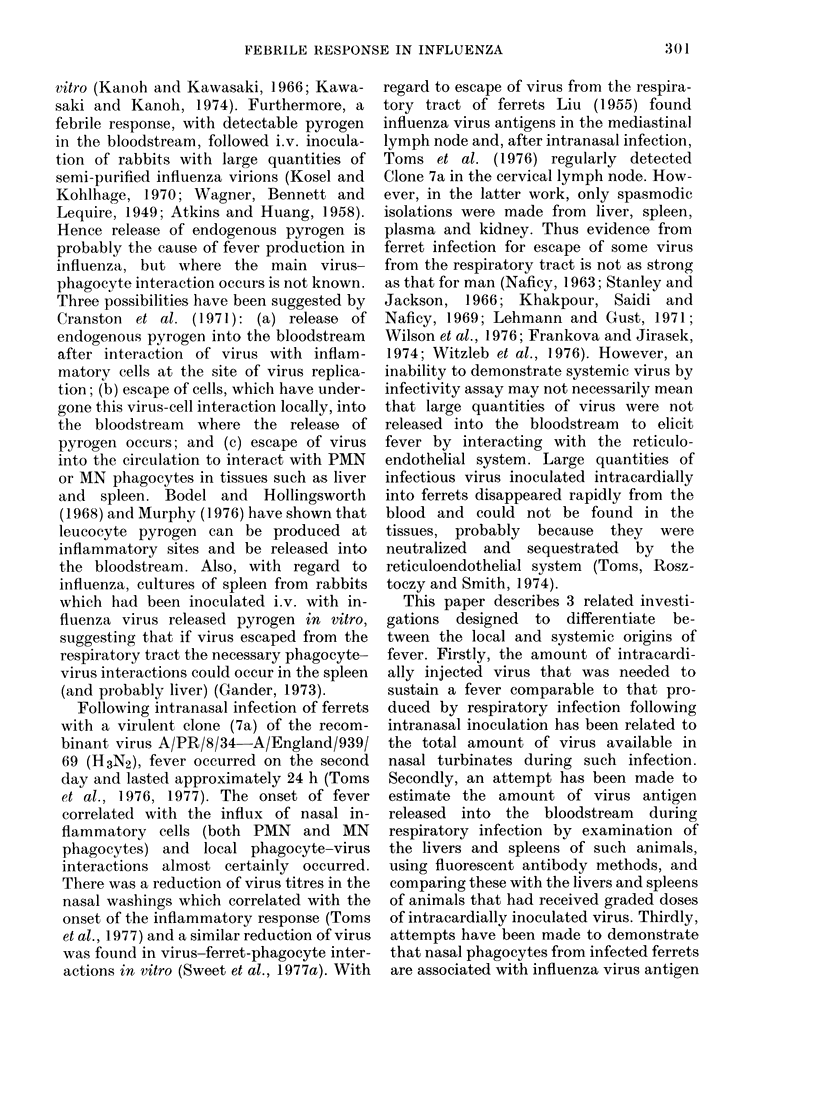
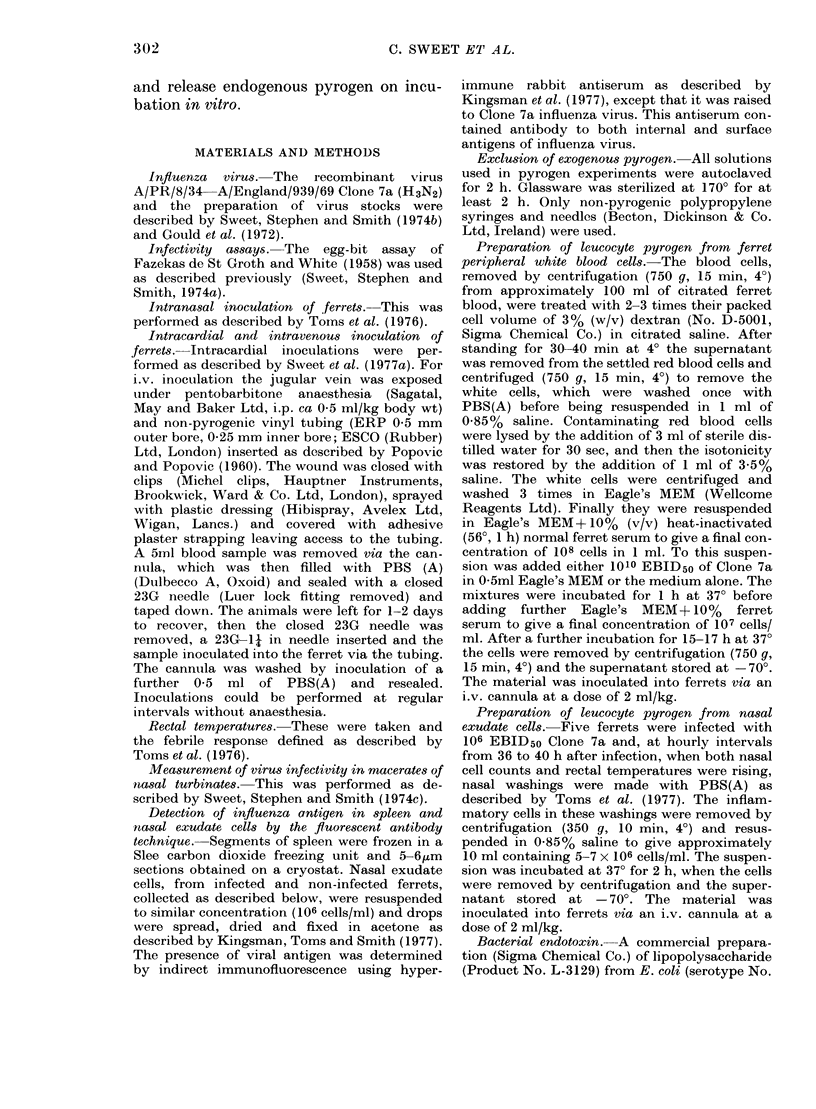
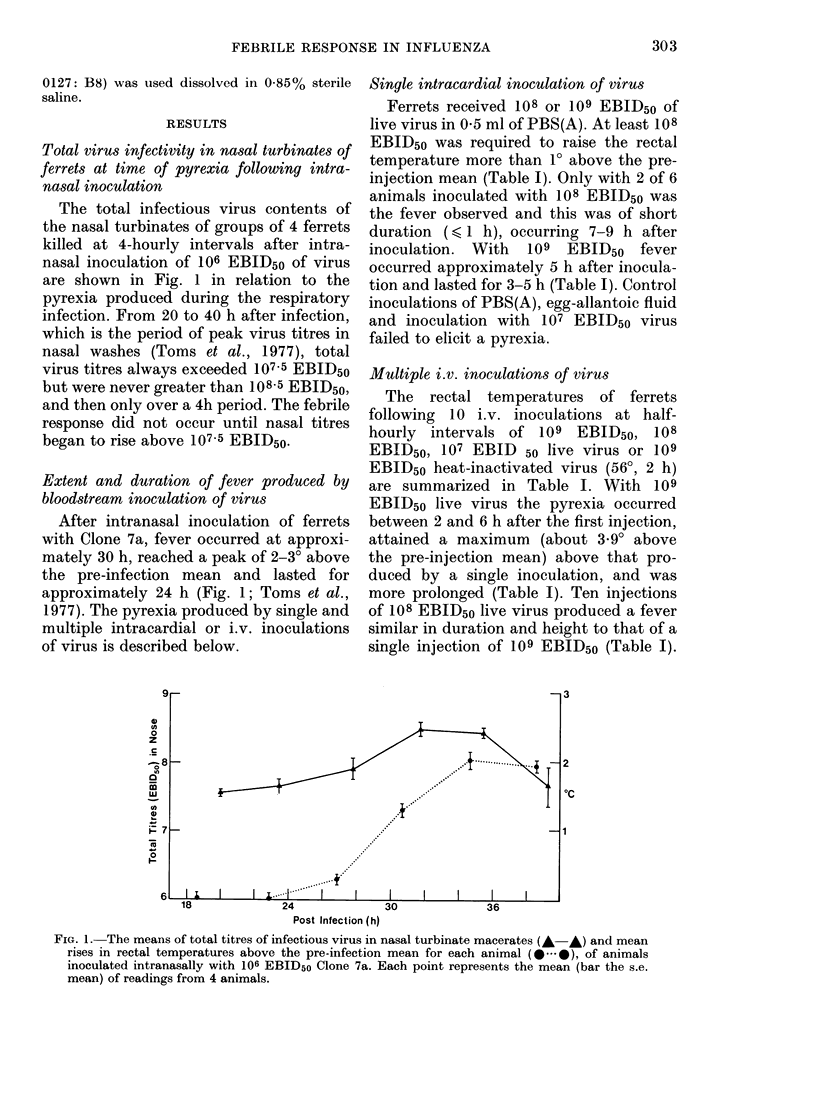
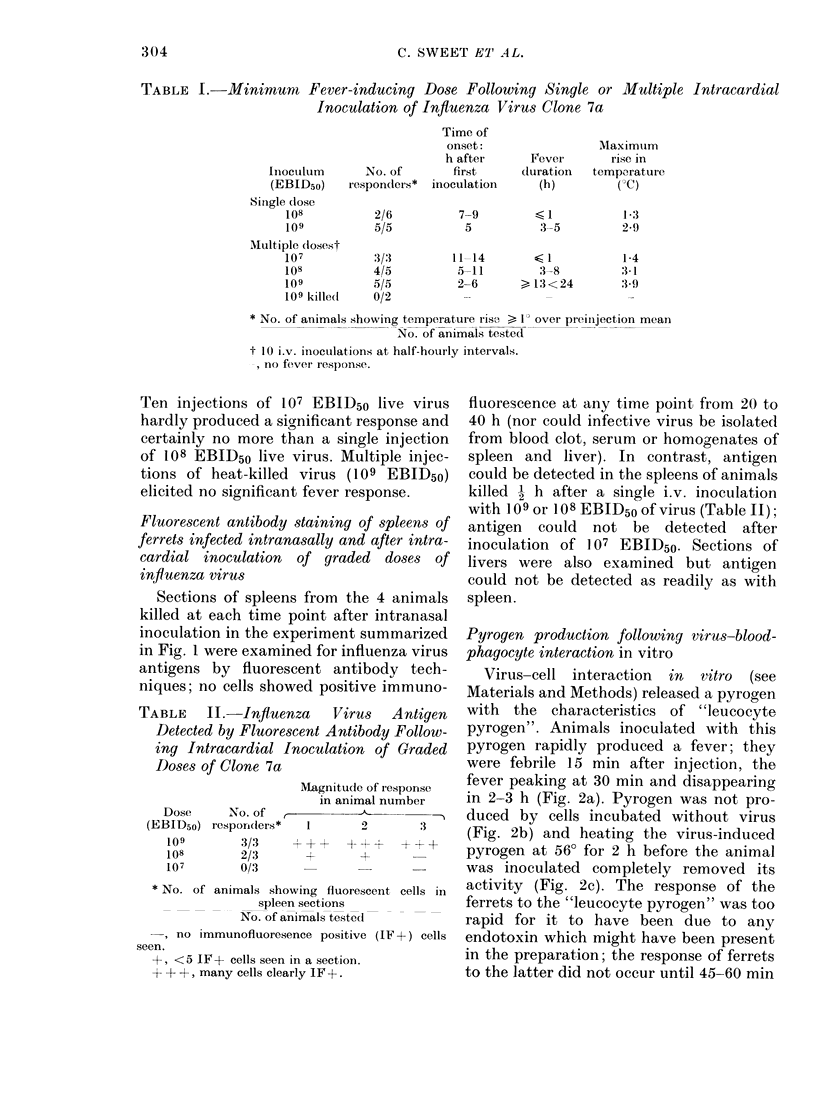
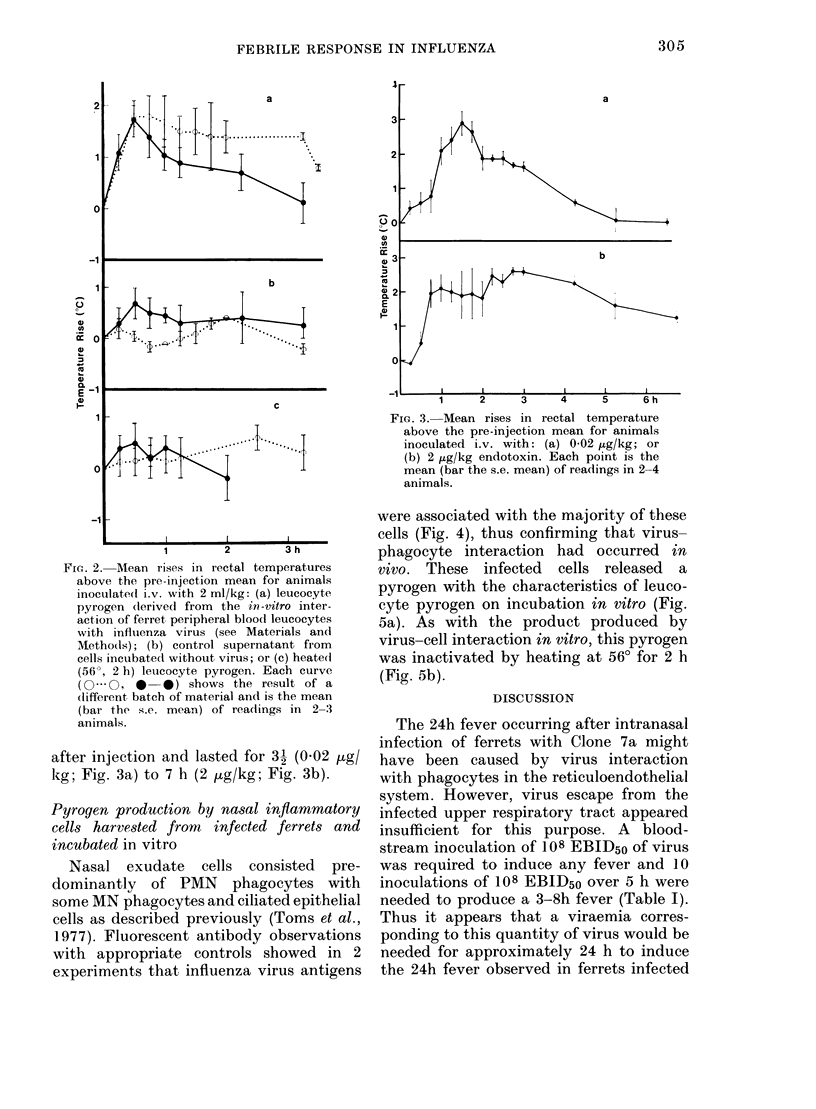
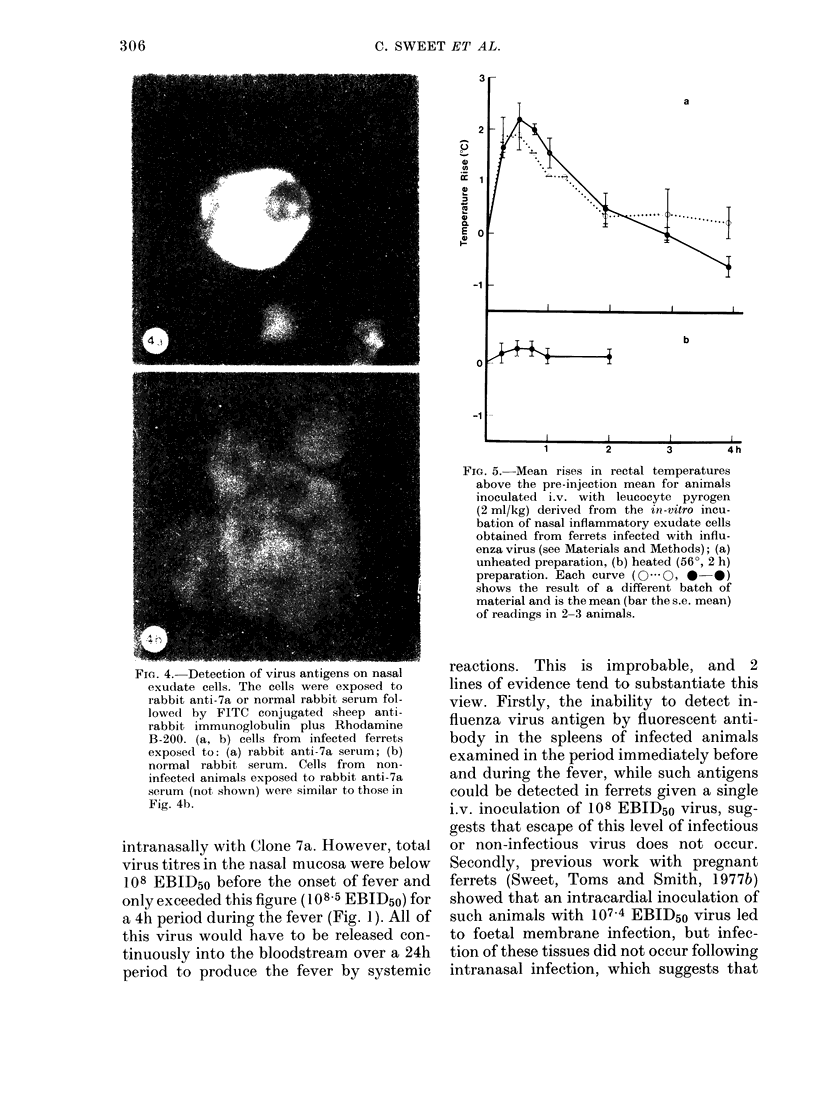
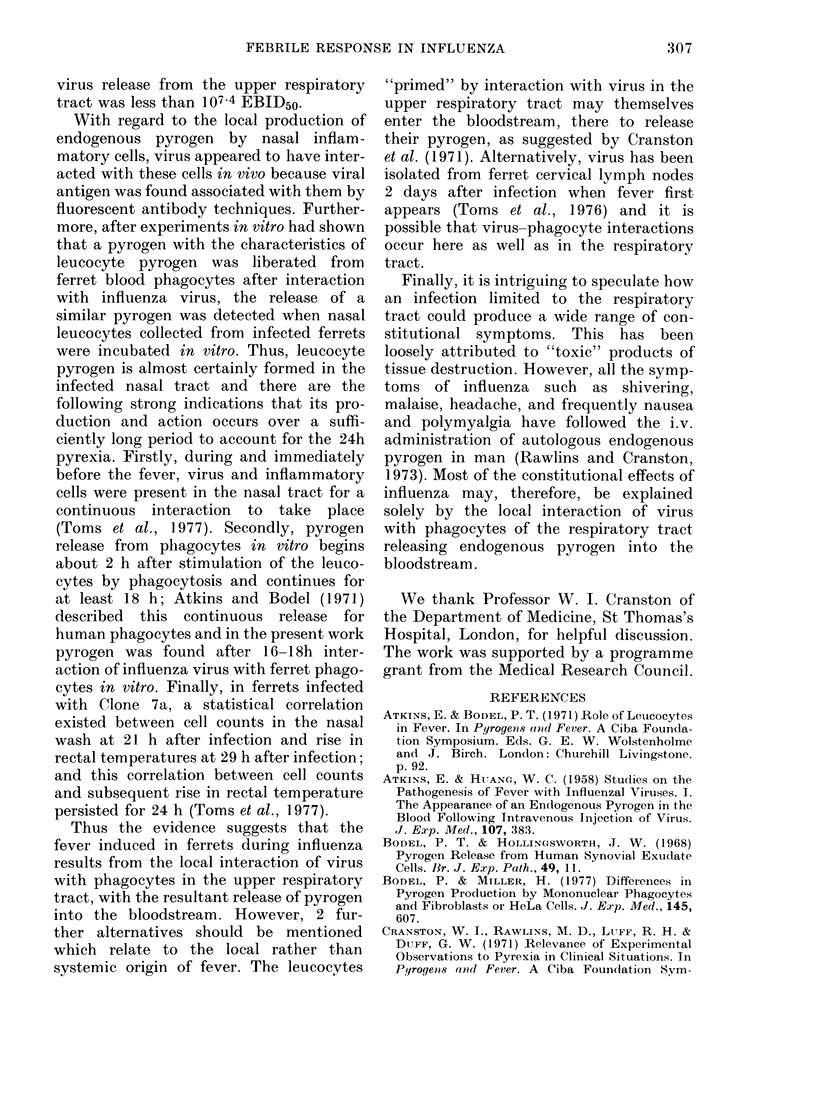
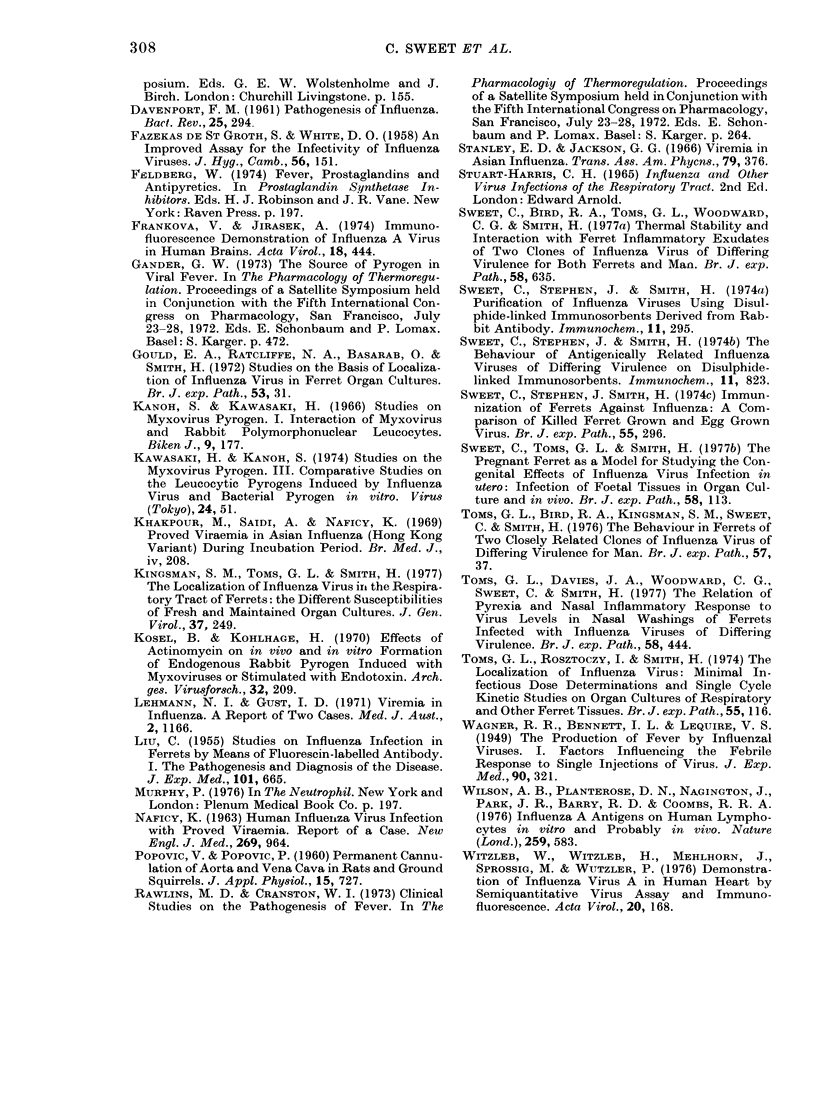
Images in this article
Selected References
These references are in PubMed. This may not be the complete list of references from this article.
- ATKINS E., HUANG W. C. Studies on the pathogenesis of fever with influenzal viruses. I. The appearance of an endogenous pyrogen in the blood following intravenous injection of virus. J Exp Med. 1958 Mar 1;107(3):383–401. doi: 10.1084/jem.107.3.383. [DOI] [PMC free article] [PubMed] [Google Scholar]
- Bodel P. T., Hollingsworth J. W. Pyrogen release from human synovial exudate cells. Br J Exp Pathol. 1968 Feb;49(1):11–19. [PMC free article] [PubMed] [Google Scholar]
- Bodel P., Miller H. Differences in pyrogen production by mononuclear phagocytes and by fibroblasts or HeLa cells. J Exp Med. 1977 Mar 1;145(3):607–617. doi: 10.1084/jem.145.3.607. [DOI] [PMC free article] [PubMed] [Google Scholar]
- FAZEKAS DE ST GROTH S., WHITE D. O. An improved assay for the infectivity of in influenza viruses. J Hyg (Lond) 1958 Mar;56(1):151–162. doi: 10.1017/s0022172400037621. [DOI] [PMC free article] [PubMed] [Google Scholar]
- Gould E. A., Ratcliffe N. A., Basarab O., Smith H. Studies of the basis of localization of influenza virus in ferret organ cultures. Br J Exp Pathol. 1972 Feb;53(1):31–36. [PMC free article] [PubMed] [Google Scholar]
- Kawasaki H., Kano S. [Studies on the myxovirus pyrogen. III. Comparative studies on the leucocytic pyrogens induced by influenza virus and bacterial pyrogen in vitro (author's transl)]. Uirusu. 1974 Apr;24(1):51–56. [PubMed] [Google Scholar]
- Khakpour M., Saidi A., Naficy K. Proved viraemia in Asian influenza (Hong Kong variant) during incubation period. Br Med J. 1969 Oct 25;4(5677):208–209. doi: 10.1136/bmj.4.5677.208. [DOI] [PMC free article] [PubMed] [Google Scholar]
- Kingsman S., Toms G. L., Smith H. The localization of influenza virus in the respiratory tract of ferrets: the different susceptibilities of fresh and maintained organ cultures. J Gen Virol. 1977 Nov;37(2):249–258. doi: 10.1099/0022-1317-37-2-249. [DOI] [PubMed] [Google Scholar]
- LIU C. Studies of influenza infection in ferrets by means of fluorescein-labelled antibody. I. The pathogenesis and diagnosis of the disease. J Exp Med. 1955 Jun 1;101(6):665–676. doi: 10.1084/jem.101.6.665. [DOI] [PMC free article] [PubMed] [Google Scholar]
- NAFICY K. HUMAN INFLUENZA INFECTION WITH PROVED VIREMIA. REPORT OF A CASE. N Engl J Med. 1963 Oct 31;269:964–966. doi: 10.1056/NEJM196310312691807. [DOI] [PubMed] [Google Scholar]
- POPOVIC V., POPOVIC P. Permanent cannulation of aorta and vena cava in rats and ground squirrels. J Appl Physiol. 1960 Jul;15:727–728. doi: 10.1152/jappl.1960.15.4.727. [DOI] [PubMed] [Google Scholar]
- Stanley E. D., Jackson G. G. Viremia in Asian influenza. Trans Assoc Am Physicians. 1966;79:376–387. [PubMed] [Google Scholar]
- Sweet C., Bird R. A., Toms G. L., Woodward C. G., Smith H. Thermal stability and interaction with ferret inflammatory exudates of two clones of influenza virus of differing virulence for both ferrets and man. Br J Exp Pathol. 1977 Dec;58(6):635–643. [PMC free article] [PubMed] [Google Scholar]
- Sweet C., Stephen J., Smith H. Immunization of ferrets against influenza: a comparison of killed ferret grown and egg grown virus. Br J Exp Pathol. 1974 Jun;55(3):296–304. [PMC free article] [PubMed] [Google Scholar]
- Sweet C., Stephen J., Smith H. Purification of influenza viruses using disulphide-linked immunosorbents derived from rabbit antibody. Immunochemistry. 1974 Jun;11(6):295–304. doi: 10.1016/0019-2791(74)90365-6. [DOI] [PubMed] [Google Scholar]
- Sweet C., Stephen J., Smith H. The behaviour of antigenically related influenza viruses of differing virulence on disulphide-linked immunosorbents. Immunochemistry. 1974 Dec;11(12):823–826. doi: 10.1016/0019-2791(74)90304-8. [DOI] [PubMed] [Google Scholar]
- Sweet C., Toms G. L., Smith H. The pregnant ferret as a model for studying the congenital effects of influenza virus infection in utero: infection of foetal tissues in organ culture and in vivo. Br J Exp Pathol. 1977 Apr;58(2):113–123. [PMC free article] [PubMed] [Google Scholar]
- Toms G. L., Bird R. A., Kingsman S. M., Sweet C., Smith H. The behaviour in ferrets of two closely related clones of influenza virus of differing virulence for man. Br J Exp Pathol. 1976 Feb;57(1):37–48. [PMC free article] [PubMed] [Google Scholar]
- Toms G. L., Davies J. A., Woodward C. G., Sweet C., Smith H. The relation of pyrexia and nasal inflammatory response to virus levels in nasal washings of ferrets infected with influenza viruses of differing virulence. Br J Exp Pathol. 1977 Aug;58(4):444–458. [PMC free article] [PubMed] [Google Scholar]
- Toms G. L., Rosztoczy I., Smith H. The localization of influenza virus: minimal infectious dose determinations and single cycle kinetic studies on organ cultures of respiratory and other ferret tissues. Br J Exp Pathol. 1974 Apr;55(2):116–129. [PMC free article] [PubMed] [Google Scholar]
- Witzleb W., Witzleb H., Mehlhorn J., Sprössig M., Wutzler P. Demonstration of influenza virus A in human heart by semiquantitative virus assay and immunofluorescence. Acta Virol. 1976 Apr;20(2):168–168. [PubMed] [Google Scholar]



